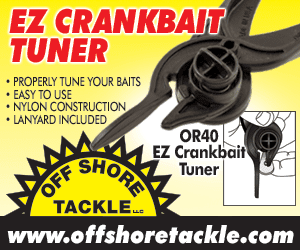Spring has sprung–mostly–throughout the Upper Midwest, nearly 3 weeks earlier than normal. Ice has left or is leaving most waters, other on some very large, up north lakes. Spring fishing is just starting to take off.
Walleyes are actively making prespawn movements upriver or toward creeks and river mouths. Pike are either spawning in marshy backwaters, or have already completed spawning.
in marshy backwaters, or have already completed spawning.
For fish of the bass and panfish persuasions, however, the next few weeks have little to do with spawning, or even prespawn activity. Instead everything that crappies, bluegills, largemouths and smallmouths are doing is all about finding stability, warming water and food.
The first three–crappies, ‘gills and bigmouths–will be seeking warming water in wind-sheltered areas at the backs ends of bays, channels and harbors. That’s simultaneously where food will begin mysteriously appearing in the form of plankton, minnows and small baitfish. Not just a coincidence; more like a pattern.
Sun beating down on calm, shallow water rapidly warms the surroundings, kicking the food chain into gear. The warmer and more stable the weather, the faster the spring fishing bite begins, sometimes just a couple of days after ice-out.
 The cooler and more erratic the weather, however–spring cold fronts, storms, rain and such–the slower this movement occurs, with fish lagging behind in late-ice areas just outside their spring feeding zones.
The cooler and more erratic the weather, however–spring cold fronts, storms, rain and such–the slower this movement occurs, with fish lagging behind in late-ice areas just outside their spring feeding zones.
The real kicker for anglers is unstable weather–a day or two of sunshine–followed by a day or two of wind and rain. That confuses the fish–and the fishing patterns. Fish move into the shallows–and then back out again. In. Out. In again. If they’re not here, they must have moved back out again. Or be holding in transition spots, like holes in bays or atop flats, which are neither here nor there.
Bass and panfish that move shallow will zero in on flooded wood, since weeds have been mashed flat by ice and provide little cover.
 Dangle a small jig beneath a stealthy bobber just outside cover to entice panfish bites. Where the season is open for largemouths, try slow-rolling spinnerbaits through the shallows.
Dangle a small jig beneath a stealthy bobber just outside cover to entice panfish bites. Where the season is open for largemouths, try slow-rolling spinnerbaits through the shallows.
Smallmouths, by comparison, are more critters of the main lake. When they begin moving shallow in spring, it’s atop shallow sand and rock flats adjoining deep water. The funny thing is, they often bite rather well despite spring cold fronts. Twitch and pause a suspending jerk bait around boulders in 4 to 8 feet of water, and you’ll likely get bit. Especially in the afternoon, after the sun has warmed the water even slightly.
In effect, early on, back bays tend to produce best for largemouths and panfish in good weather. Flats and drop-offs tend to be better for scrounging inactive fish waiting to move in.
Your ace in the hole, however, is smallmouth bass. They bite surprisingly well even when lakes are still half-covered in ice, despite spring cold fronts, at times when other species are lying low. Thus, where the season is open, keep fishing for smallies in mind, even if just as a backup plan. Especially for those tough times when it isn’t all about stability, warming water and food; basically, for when it’s all about getting bit in the first place.










